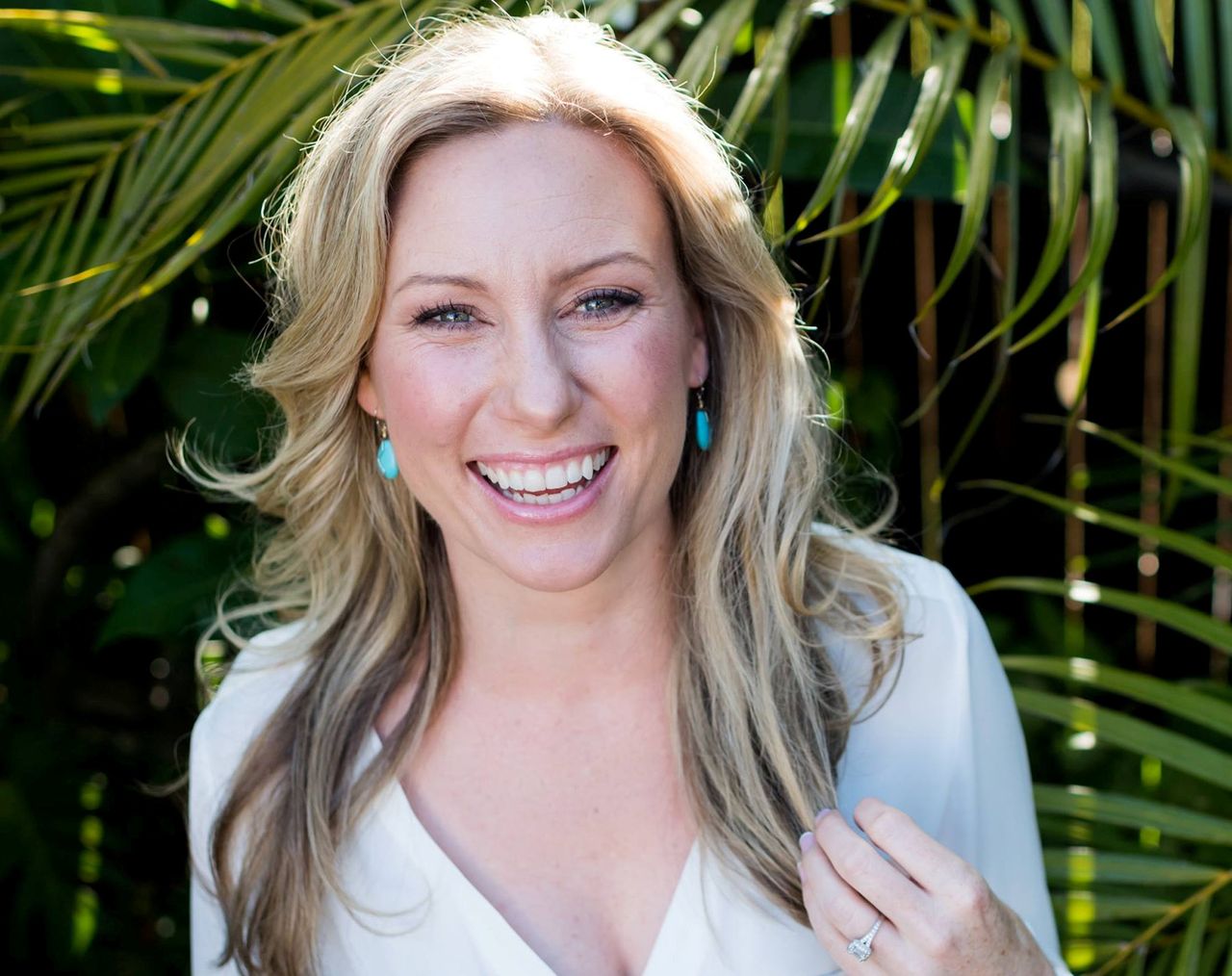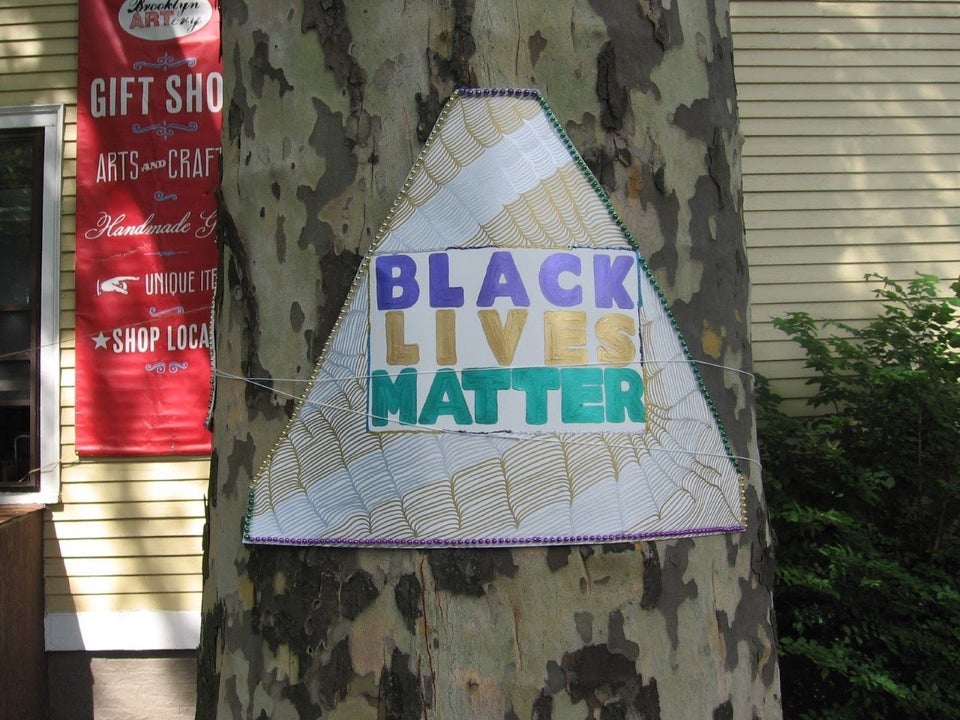How did police end up fatally shooting a blonde, 40-year-old yoga teacher from Australia, as she stood in her pajamas outside her home in an affluent, predominantly white Minneapolis neighborhood?
That question has been focal point since Minneapolis Police Officer Mohamed Noor killed Justine Damond on July 15, after she called to report a possible sexual assault near her home. It’s not clear what happened between the time Damond called 911 and when the officers arrived. Officer Matthew Harrity, Noor’s partner, says he heard a loud noise before Noor fired a single shot into Damond’s stomach from the passenger seat of the police cruiser.
As with many police shootings, Damond’s death has been clouded by a breakdown in transparency, which has drawn frustrated responses from around the region. In vigils and protests, demonstrators have asked why the officer didn’t have their body cameras turned on, despite a department policy requiring the devices to be activated either during or after critical incidents. Law enforcement officials have been slow to offer details or explanations. Left largely in the dark, Damond’s family has called for a federal investigation into her death and changes in police protocol.
Many of the questions surrounding Damond’s death look familiar, because they’ve been asked before in the wake of numerous high-profile shootings, often involving black civilians. But the near-universal demand for answers, driven by a shared sense of outrage and shock across the political divide over Damond’s death, is not. Something is different about Damond.
Robert Bennett, the Minneapolis lawyer hired to represent Damond’s family, unintentionally touched on the well-known concept of a “perfect” victim in an interview earlier this month, when he referred to Damond in an off-the-cuff remark as “the most innocent victim” of any police shooting he’s heard of.
Bennett quickly clarified that he believed Philando Castile, the 32-year-old black man killed by a Minnesota police officer last year, was “innocent” as well. Bennett also represented Castile’s family.
By some accounts, Damond appears to fit the definition of the supposed “perfect victim” of a police shooting ― someone who does everything right and that everyone can empathize with, regardless of race or socioeconomic class. This idea is itself grounded in race, and it reveals a lot about how society at large views police violence and its victims. It also creates a problematic standard. We shouldn’t need to find anything “perfect” about police shootings or their casualties to understand that they’re tragic and, at times, entirely preventable.
Let’s not overthink this: Damond was innocent. But Bennett’s description of her as “the most innocent” is telling, in that it makes an unnecessary, hierarchical ranking of which lives we believe are the most valuable ― and therefore which killings we believe are the least justified.
Media outlets have highlighted this dynamic in the way they’ve chosen to cover Damond. Many focused on the fact that she was a “bride-to-be,” a heartbreaking detail that adds to the sense that there is something viscerally unjust about her death.
Castile, too, was engaged to be married, but the news media pointed out that he was never discussed in such personal or affectionate terms.
“I don’t remember any reporter, any headlines, any news stories announcing or identifying Philando Castile in terms of his marital status the way that they immediately have been identifying Justine Damond by her marital status,” Brentin Mock, a writer for CityLab, told WBEZ, a Chicago NPR affiliate.
“It’s almost to suggest that, yes, there should be some extra sympathy — some extra empathy — for the killing of this white woman because she was about to get married,” he continued. “But there was no such sympathy extended to Mr. Castile, an African-American, despite that he was about to get married.”
Even the mayor has been criticized for appearing more empathetic to Damond than she was to Jamar Clark, a 24-year-old black man shot and killed by a Minneapolis police officer in November. In an interview with activist DeRay Mckesson on his podcast “Pod Save The People,” Mayor Betsy Hodges claimed she had worked “day in and day out” to address the community’s concerns following Clark’s death. But she was less vocal about it publicly.
“Race has a role to play in all of this, I can’t deny that,” Hodges said when questioned about the difference in response. “But in terms of my response, it’s been about having learned the lessons from what people wanted me to learn from Jamar Clark’s death and the occupation of the grounds of the 4th Precinct after that, and me deploying those lessons every chance I have, every way that I can to be responsive to what the community needs when we face a tragedy like this.”
Damond’s death has also brought about some swift consequences for law enforcement, beginning with the resignation of the city’s police chief. In other place, like Baltimore, Maryland; Chicago, Illinois; or Ferguson, Missouri ― it has taken months of nationwide backlash directed at the police department for leaders to step aside. Minneapolis Police Chief Janee Harteau, who went out of her way to publicly denounce the officer who shot Damond, left the force a stunning six days after the shooting.
In an unusual turn, the city’s police union, an aggressive and reliably vocal division of the Fraternal Order of Police, has so far been silent on the incident. Police union president Lt. Bob Kroll, who has called Black Lives Matter “a terrorist organization” for demonstrating against police brutality, says he is waiting until a state investigators complete a probe into her death before he comments. He hasn’t offered up any defense of the officer, or blamed the victim which as has become the standard boilerplate defense in many police shooting cases.
Oftentimes after a police shooting, law enforcement, the media and suspicious public opinion work together to shift the liability for police shootings onto the victim ― at least whenever the victim is black. Shooting victim, Tamir Rice’s “size made him look much older,” even though he was only 12 years old. Freddie Gray was “intentionally trying to injure himself,” even though he was handcuffed and not seat-belted in the back of a moving police van. Rekia Boyd, 22, made the officer who shot her “feel threatened,” even as she was walking away.
But Damond’s whiteness appears to have protected her from the slander that often follows such an injustice. Nobody has painted her as a criminal, or a shady figure who cops could have understandably mistaken for a threat. Nor has coverage of her death immediately given way to the reflexive assumption that police were justified in the shooting. She’s been deemed innocent, with some putting forward her romantic life ― or her career as a yoga teacher ― as causes for sympathy.
Even conservative-leaning news outlets appear to have wavered from their tendency to side with law enforcement in this case, instead pivoting to focus on the profile of the officer.
A headline from Fox News calls attention to the fact that Noor is a Somali-American Muslim. One from Breitbart News reads: “Woman Calls 911, Shot Dead by Minneapolis Officer,” a stark turn from its headline during coverage of the Freddie Gray killing in Baltimore, in which they referred to Gray as a ”Heroin Trafficker.” Although the outlet is infamous for blaming black victims of police shootings for their own deaths at the hands of police, there is no such thread in their coverage of Damond’s shooting.
For some inflammatory bomb-throwers, Damond has not only proven to be their “perfect victim,” but Noor has become their “perfect perpetrator.”
Outspoken Islamophobic extremist Pamela Geller wrote a blog post bashing the “killer-cop” for being a Somali-American Muslim. “If a blonde cop killed a Muslim, we would all be raked over the coals,” she wrote. “There would be marches and calls for sharia legislation and gd [sic] knows what.” Geller has also compared black protesters demonstrating for black victims of police violence to fighters in the Islamic State.
During a speech on July 19, former Minnesota Rep. Michele Bachmann (R) called Noor an “affirmative action hire” and mulled over the possibility that Noor killed Damond for “cultural” reasons. In a later interview with the conservative World Net Daily, she blamed Noor’s Muslim faith.
“Noor comes from the mandated cover-up women culture. That’s why I’m wondering if they’ll ask whether his cultural views led him to shoot her,” she said. “That’s something, if true, I can’t imagine the progressives would allow to get out.”
Conservative commentator Ann Coulter even implied that the killing wouldn’t have happened if it weren’t for the Somali population living in the country.
In other words, conservative pundits and pro-police groups have finally found an officer they’re comfortable not standing behind. Blue Lives Matter, a loose network of vocal law enforcement supporters, defended the officers ― including the black officers ― indicted for killing black men like Gray, Keith Scott and Sylville Smith. But faced with a black cop shooting an unarmed white woman, many of these same people have instead found themselves in an unfamiliar position: A white person has tragically fallen victim to a systemic problem that most frequently affects people of color.
It seems many of Damond’s family, friends and neighbors have come together with the realization that America needs to make drastic changes to its policing system. But the response from those who have traditionally stood behind the violence of police officers and eagerly demonized their victims suggests this outrage and empathy may continue to be selective to only the “most innocent” or “perfect” victims.
In a perfect world, however, this tragedy, and the countless others before it, would lead people of all races to rally around the issue of police reform.

